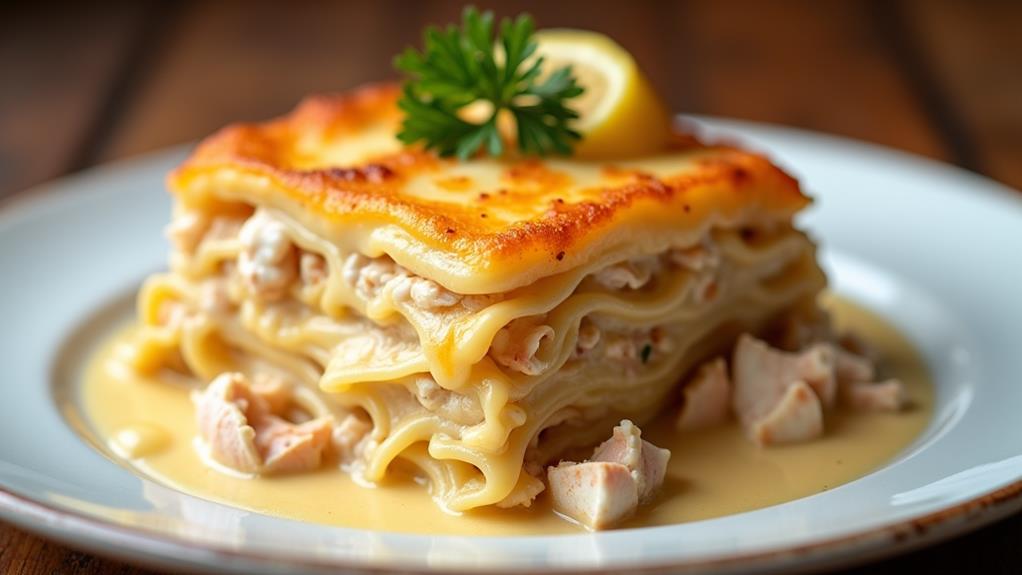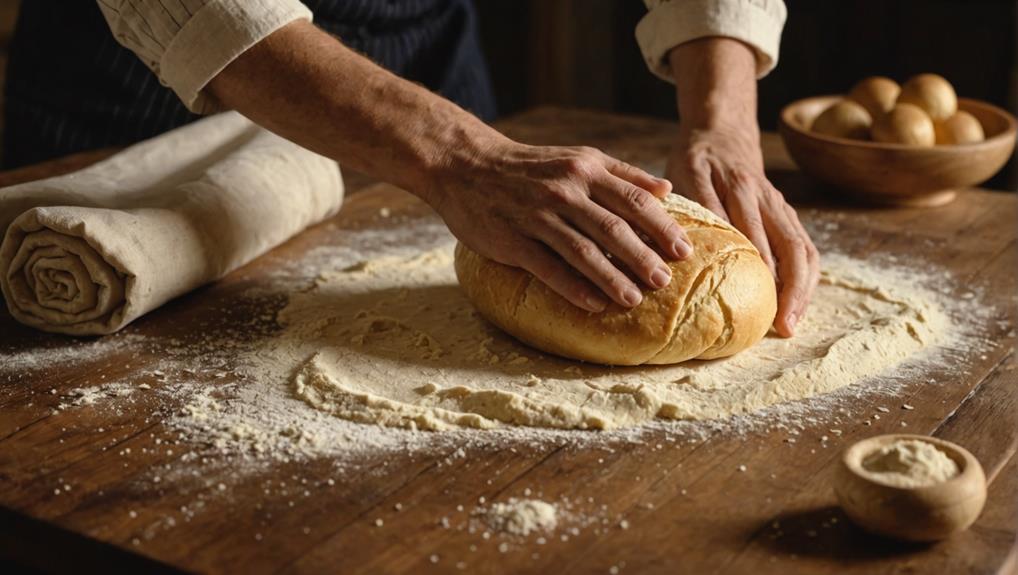You've just stumbled upon a culinary gem that's about to transform your dinner table. Crab Lasagne with Brown Crabmeat isn't your average pasta dish; it's a sophisticated fusion of Italian comfort food and luxurious seafood. You'll find layers of tender pasta sheets, velvety béchamel sauce, and a generous mix of white and brown crabmeat, all baked to golden perfection. But there's more to this dish than meets the eye. Its unique blend of flavors and textures holds a secret that's been captivating food lovers and chefs alike. What makes this lasagne so special? The answer might surprise you.
Key Takeaways
- Crab lasagne combines white and brown crabmeat for a rich seafood flavor in a traditional pasta dish.
- The recipe layers lasagne sheets with crab mixture, béchamel sauce, and mozzarella cheese.
- Brown crabmeat adds depth and intensity to the dish's flavor profile.
- Baking at 375°F (190°C) for 25-30 minutes creates a golden, bubbling lasagne.
- Fresh herbs like parsley, chives, or dill can be used as a garnish to enhance flavor and presentation.
History
While the exact origins of crab lasagne are unclear, it's likely a relatively recent invention. You'll find that this dish combines traditional Italian pasta-making techniques with the seafood-rich cuisine of coastal regions.
It's a perfect example of culinary fusion, blending the best of both worlds to create something truly unique.
As you explore the history of crab lasagne, you'll discover that it's part of a broader trend of incorporating seafood into classic pasta dishes. This innovation reflects changing tastes and the growing popularity of seafood in modern cuisine.
You'll notice that chefs and home cooks alike have been experimenting with different combinations, seeking to elevate familiar recipes with luxurious ingredients like crab.
The use of brown crabmeat in lasagne is particularly noteworthy. It's a testament to the evolving appreciation for all parts of the crab, not just the prized white meat.
This approach not only enhances the flavor profile but also aligns with sustainable cooking practices, making use of the entire animal.
As you delve deeper into the dish's history, you'll see how it represents a creative and resourceful approach to cooking.
Recipe
Crab Lasagne with Brown Crabmeat is a luxurious twist on the classic Italian dish, combining the rich flavors of the sea with comforting layers of pasta and creamy sauce. This indulgent meal showcases the delicate sweetness of white crabmeat alongside the more robust taste of brown crabmeat, creating a depth of flavor that seafood lovers will adore.
By using both types of crabmeat, this recipe ensures a perfect balance of textures and tastes. The brown crabmeat, in particular, adds a distinctive richness that elevates the dish, while the white crabmeat provides a delicate sweetness. When combined with layers of pasta, creamy béchamel sauce, and melted mozzarella, the result is a truly unforgettable dining experience.
- 1 lb (450g) fresh lasagne sheets
- 8 oz (225g) white crabmeat
- 8 oz (225g) brown crabmeat
- 2 cups (500ml) béchamel sauce
- 2 cups (200g) grated mozzarella cheese
- 1/4 cup (60ml) white wine
- Salt and pepper to taste
Preheat the oven to 375°F (190°C). In a bowl, gently mix the white and brown crabmeat with the white wine, and season with salt and pepper.
In a greased baking dish, layer lasagne sheets, followed by a portion of the crab mixture, béchamel sauce, and mozzarella cheese. Repeat these layers until all ingredients are used, finishing with a layer of béchamel and mozzarella on top. Bake for 25-30 minutes or until the top is golden brown and bubbling.
For best results, let the lasagne rest for 10-15 minutes before serving to allow the layers to set. If you prefer a stronger crab flavor, consider increasing the ratio of brown to white crabmeat.
To add a fresh touch, garnish with chopped parsley or a squeeze of lemon juice just before serving. For a richer version, you can add a layer of sautéed spinach or roasted bell peppers between the crab layers.
Cooking Steps
To create your crab lasagne, you'll start by preparing a fresh crab mixture and layering it with pasta sheets and creamy sauce.
Once assembled, you'll bake the lasagne until it's golden and bubbling, then allow it to rest before serving.
For a finishing touch, garnish your lasagne with fresh herbs to enhance both its appearance and flavor.
Step 1. Prepare Fresh Crab Mixture
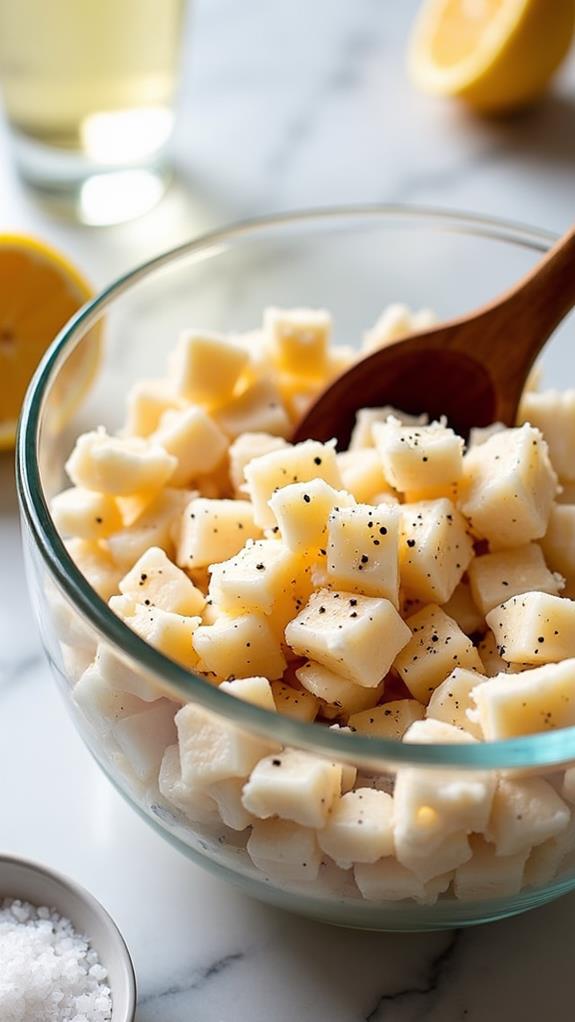
Before assembling the lasagne, you'll need to prepare the fresh crab mixture. Start by combining the white and brown crabmeat in a large bowl. The brown crabmeat, with its rich flavor, will give your dish depth and complexity.
Gently fold in the white wine, which will add a subtle acidity and enhance the crab's natural sweetness. Be careful not to overmix, as you want to maintain the crab's delicate texture.
Next, season the mixture with salt and pepper to taste. You might also consider adding a pinch of Old Bay seasoning or a dash of cayenne pepper for an extra kick.
If you're feeling adventurous, try incorporating some finely chopped fresh herbs like chives or tarragon to brighten the flavors. Once you're satisfied with the seasoning, cover the bowl and refrigerate the mixture for about 30 minutes.
This resting period allows the flavors to meld and intensify, resulting in a more cohesive and flavorful filling for your lasagne. When you're ready to assemble, give the mixture a final gentle stir before layering it between the pasta sheets.
Step 2. Layer Pasta and Sauce
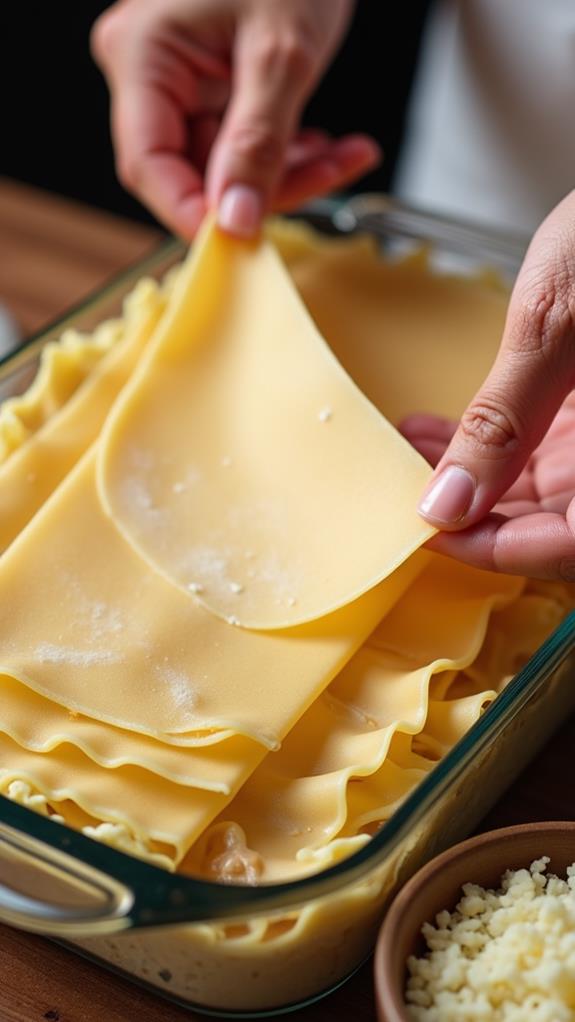
The first step in assembling your crab lasagne is to create a solid foundation. Begin by spreading a thin layer of béchamel sauce on the bottom of your baking dish. This will prevent the pasta from sticking and ensure a creamy base.
Next, place a layer of lasagne sheets over the sauce, making sure they don't overlap.
Now, it's time to add your crab mixture. Spread a generous portion of the crab and white wine mixture over the pasta sheets, distributing it evenly.
Follow this with another layer of béchamel sauce, and sprinkle a handful of grated mozzarella cheese on top.
Repeat these layers – pasta, crab mixture, béchamel, and cheese – until you've used all your ingredients or reached the top of your baking dish.
For the final layer, cover the pasta with béchamel sauce and a liberal amount of mozzarella cheese. This will create a golden, bubbly crust when baked.
Remember to press down gently on each layer as you build to remove any air pockets, ensuring a compact and stable lasagne.
Step 3. Bake Lasagne Until Golden

Oven mitts at the ready, it's time to bake your crab lasagne to golden perfection. Carefully place your assembled dish into the preheated oven, set at 375°F (190°C).
As the lasagne bakes, you'll notice the enticing aroma of seafood and cheese filling your kitchen. Keep a watchful eye on your creation through the oven door, looking for signs of bubbling around the edges and a golden-brown crust forming on top.
After about 25 minutes, check the lasagne's progress. If it's not quite golden enough, let it bake for another 5 minutes.
Once you've achieved that perfect golden hue, remove the dish from the oven with your mitts. Don't be tempted to dig in right away! Allow the lasagne to rest for 10-15 minutes. This crucial step lets the layers set, making it easier to slice and serve.
As you wait, you'll notice the cheese settling and the aromas intensifying. When the time's up, grab a sharp knife and cut into your masterpiece, revealing the delicious layers of pasta, crab, and creamy sauce. Serve immediately and savor your homemade crab lasagne.
Step 4. Rest Lasagne Before Serving
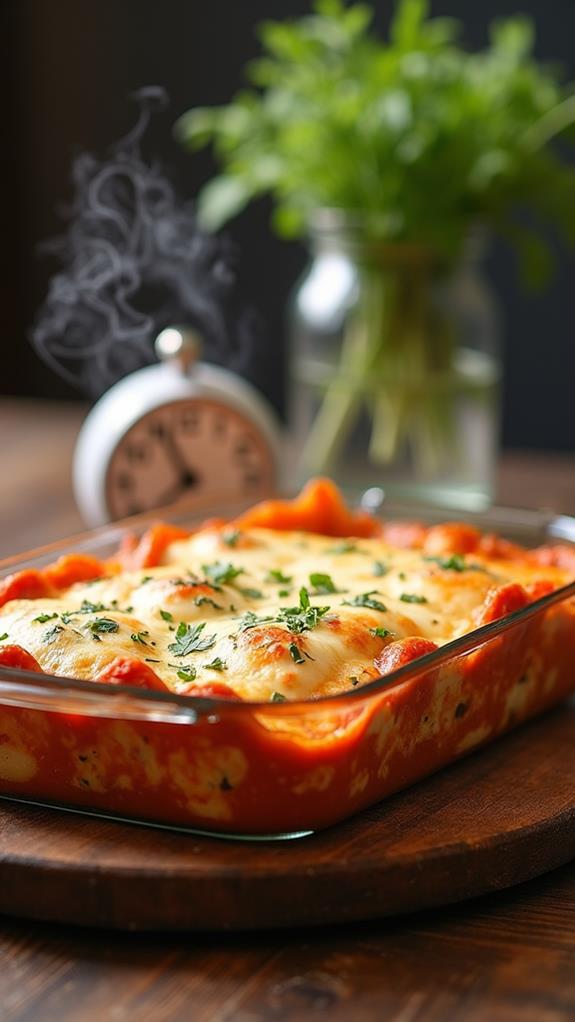
Once you've removed your golden crab lasagne from the oven, resist the temptation to serve it immediately. Instead, let it rest for 10 to 15 minutes. This crucial step allows the layers to set and the flavors to meld, resulting in a more cohesive and delicious dish.
During the resting period, the lasagne will cool slightly, making it easier to cut and serve without falling apart. As you wait, you'll notice the enticing aroma of crab and cheese filling your kitchen. Use this time to prepare a simple side salad or warm some crusty bread to complement your meal.
When the resting time is up, you'll find that the lasagne has firmed up nicely. Now, you can cut clean, neat portions that hold their shape on the plate. The layers will be distinct, showcasing the alternating pasta, crab mixture, and creamy béchamel sauce.
Step 5. Garnish With Fresh Herbs
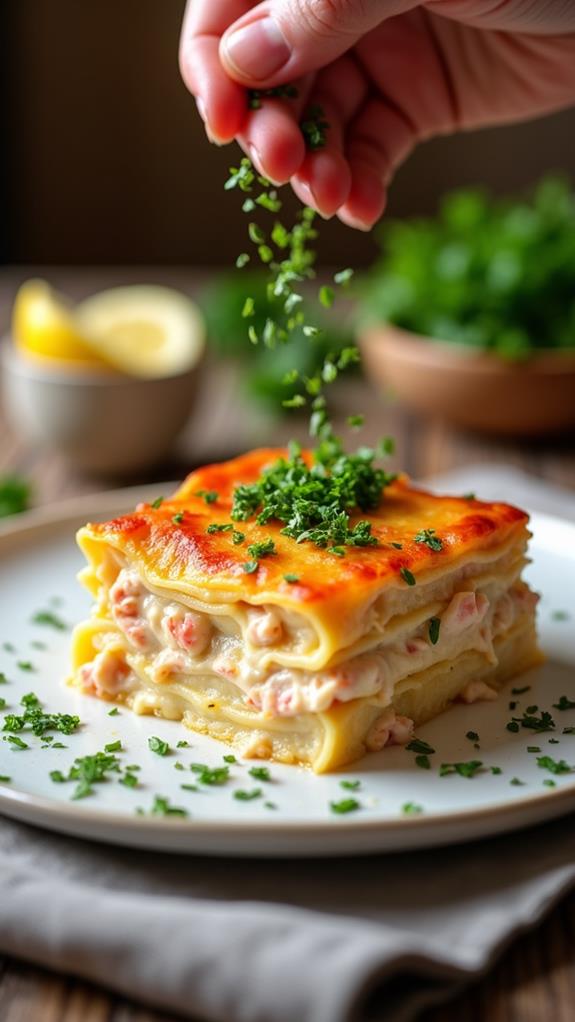
Fresh herbs can elevate your crab lasagne from delicious to extraordinary. When your lasagne has finished baking and resting, it's time to add that final touch of freshness. Choose herbs that complement the rich flavors of crab and cheese, such as flat-leaf parsley, chives, or dill. Finely chop your selected herbs and sprinkle them generously over the top of the lasagne just before serving.
For a more intense flavor, you can mix some of the chopped herbs into the béchamel sauce or crab mixture during the layering process. This will infuse the dish with herbal notes throughout. If you're feeling adventurous, try a combination of herbs for a more complex flavor profile. A mix of parsley, chives, and a touch of tarragon can create a delightful balance.
Final Thoughts
Although it may seem daunting at first, creating this delectable Crab Lasagne is well worth the effort.
You'll find that the combination of white and brown crabmeat creates a rich, complex flavor that elevates this dish beyond ordinary lasagne.
As you layer the pasta sheets with the crab mixture, béchamel sauce, and mozzarella, you're building a masterpiece that will impress your family and guests alike.

